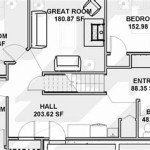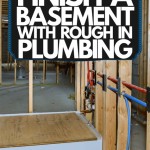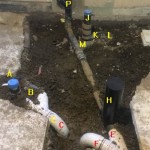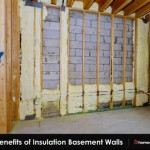How To Lay Carpet On A Concrete Basement Floor
Laying carpet on a concrete basement floor can significantly improve the comfort and livability of the space. Concrete, while durable, can be cold and uninviting, especially during colder months. Carpet provides warmth, sound insulation, and a more aesthetically pleasing environment. However, installing carpet directly on concrete requires careful preparation and specific materials to prevent moisture problems and ensure a long-lasting, attractive result. Following these steps ensures a successful carpet installation, enhancing the usability and value of the basement.
Prior to initiating any carpet installation, it is crucial to thoroughly assess the existing concrete slab. This assessment will determine the necessary preparatory steps and materials needed for a successful installation. Ignoring potential issues with the concrete can lead to premature carpet failure and costly repairs. The evaluation should include moisture testing, crack inspection, and leveling the surface.
Assessing the Concrete Slab
Moisture is the most significant threat to carpet installed on concrete. Concrete is porous and can wick moisture from the ground, which can lead to mold growth, mildew, and carpet deterioration. Therefore, conducting a moisture test is essential. Several methods exist for testing moisture levels. A simple plastic sheet test involves taping a square of clear plastic sheeting (approximately 18" x 18") to the concrete floor for 24-72 hours. If condensation forms beneath the plastic, it indicates excessive moisture. More precise methods include using a calcium chloride test or an electronic moisture meter. These tests provide quantitative measurements of moisture vapor emission rates, helping determine if a moisture barrier is necessary.
The presence of cracks in the concrete floor must also be evaluated. Small, hairline cracks are typically not a major concern. However, larger cracks, especially those that are widening or shifting, can indicate structural issues. These cracks should be repaired using a concrete crack filler or epoxy. Ignoring these cracks can lead to uneven carpet installation and potential tripping hazards. The repair process typically involves cleaning the crack, applying the filler, and allowing it to cure according to the manufacturer's instructions.
Finally, the flatness of the concrete floor should be assessed. An uneven floor can result in an uneven carpet surface, which is not only aesthetically unappealing but also can cause premature wear and tear. Use a long level or straight edge to check for high and low spots. Minor dips and bumps can be addressed with a self-leveling compound. For more significant variations, grinding down high spots or applying a thicker layer of self-leveling compound may be necessary. Ensure that the self-leveling compound is fully cured and dry before proceeding with the next steps.
After thoroughly assessing the concrete floor and addressing any issues, the next step involves proper preparation before installing the carpet. This preparation includes cleaning the floor, applying a moisture barrier (if needed), and installing the carpet padding. Each of these steps contributes to the overall success and longevity of the carpet installation.
The first step in preparing the floor is to thoroughly clean it. Remove any debris, dirt, dust, and adhesives from previous flooring. A shop vacuum is ideal for removing loose debris. For stubborn adhesives, use a scraper and a commercial adhesive remover. Ensure that the adhesive remover is compatible with concrete and follow the manufacturer's instructions. After removing the adhesive, wipe the floor clean with a damp cloth and allow it to dry completely.
Depending on the results of the moisture test, a moisture barrier may be necessary. A moisture barrier is a thin layer of plastic or liquid membrane that prevents moisture from migrating from the concrete into the carpet and padding. If the moisture test indicates high moisture levels, applying a moisture barrier is crucial. There are several types of moisture barriers available, including polyethylene sheeting and liquid-applied membranes. Polyethylene sheeting is typically installed by overlapping the edges and taping them together. Liquid-applied membranes are rolled or brushed onto the concrete surface and allowed to cure. Follow the manufacturer's instructions for application and drying times.
Carpet padding provides cushioning, insulation, and sound absorption. It also protects the carpet from wear and tear by reducing friction between the carpet and the concrete floor. Choosing the right carpet padding is essential for the overall comfort and performance of the carpet. Consider the thickness, density, and material of the padding. Thicker padding provides more cushioning, while denser padding offers better support and durability. Common padding materials include foam, rubber, and felt. Select a padding that is specifically designed for use on concrete floors and that is compatible with the type of carpet being installed. Install the padding according to the manufacturer's instructions, typically by rolling it out and securing it with adhesive or taping the seams.
Installing the Carpet
After preparing the concrete floor, you can begin installing the carpet. This involves measuring and cutting the carpet, installing tack strips (if desired), and seaming the carpet pieces together. Careful attention to detail is essential for a professional-looking result.
Accurately measure the room to determine the amount of carpet needed. It is always better to overestimate than underestimate, as you can trim excess carpet, but you cannot add more. Consider the direction of the carpet pile when measuring, as all pieces should be laid in the same direction. Create a floor plan and mark the dimensions to ensure accurate cutting. When ordering carpet, add at least 6 inches to each dimension to account for trimming and waste. This will provide sufficient material for seaming and fitting the carpet into corners and around obstructions.
Tack strips are thin strips of wood or metal with embedded tacks that grip the carpet and hold it in place. They are typically installed around the perimeter of the room, near the baseboards. However, for concrete floors, tack strips must be glued down with a strong adhesive specifically designed for concrete. Apply the adhesive to the back of the tack strips and firmly press them onto the concrete floor. Ensure that the tacks are facing towards the wall. Tack strips are not always necessary for carpet installations on concrete, especially if the carpet is being glued down. However, they can provide a more secure and professional-looking installation.
Cut the carpet to the measured dimensions, using a sharp utility knife or carpet cutter. Place the carpet face down on a clean, flat surface to protect the pile. Use a straight edge to guide the knife and ensure clean, accurate cuts. If the room requires multiple pieces of carpet, seam them together carefully. There are several methods for seaming carpet, including using seaming tape and hot-melt adhesives. Seaming tape is a double-sided adhesive tape that is placed between the edges of the carpet pieces. A seaming iron is then used to heat the tape and bond the edges together. Hot-melt adhesives are applied to the edges of the carpet pieces and then pressed together. Regardless of the method used, ensure that the seam is tight and invisible. Place a heavy object on the seam while the adhesive is curing to ensure a strong bond.
Securing the Carpet to the Concrete
Securing the carpet to the concrete floor is a critical step in the installation process. There are two primary methods for securing carpet to concrete: using carpet adhesive or a floating installation. The choice between these methods depends on various factors, including the size of the room, the type of carpet, and personal preferences.
Using carpet adhesive involves applying a layer of adhesive to the concrete floor and then pressing the carpet firmly into the adhesive. This method provides a very secure and long-lasting bond between the carpet and the concrete. Choose a carpet adhesive that is specifically designed for use on concrete floors and that is compatible with the type of carpet being installed. Apply the adhesive according to the manufacturer's instructions, typically using a notched trowel to spread it evenly. Work in small sections to prevent the adhesive from drying out before the carpet is installed. After applying the adhesive, carefully position the carpet and press it firmly into place. Use a carpet roller to ensure good contact between the carpet and the adhesive. Allow the adhesive to cure completely before walking on the carpet.
A floating installation involves laying the carpet over a pad without adhering it directly to the concrete floor. This method is often used in smaller rooms or when the concrete floor is uneven or has existing issues. The carpet is held in place by tack strips around the perimeter of the room or by its own weight and friction with the pad. A floating installation is typically easier and faster than using carpet adhesive, but it may not be as secure or long-lasting. If choosing a floating installation, ensure that the carpet is stretched tightly and that the edges are secured properly to prevent wrinkling or shifting.
Once the carpet is secured, trim the excess carpet around the edges of the room using a sharp utility knife. Use a wall trimmer to create a clean, professional edge. Tuck the carpet edges under the baseboards or molding to conceal the cut edges. Install transition strips where the carpet meets other flooring types, such as tile or hardwood. Transition strips provide a smooth and safe transition between different floor surfaces.
After the carpet is installed, inspect it carefully for any imperfections, such as loose seams, wrinkles, or uneven areas. Address any issues promptly to prevent them from worsening over time. Vacuum the carpet thoroughly to remove any debris or dust. Consider using a carpet protector spray to help prevent stains and prolong the life of the carpet. With proper installation and maintenance, the new carpet will provide years of comfort and enjoyment.
Post-Installation Considerations
After the carpet installation is complete, several considerations are important to ensure the longevity and appearance of the new flooring. These considerations include proper ventilation, regular maintenance, and addressing any potential issues that may arise.
Proper ventilation is essential for preventing moisture buildup and mold growth in the basement. Ensure that the basement is adequately ventilated by opening windows or using a dehumidifier. This will help to keep the carpet dry and prevent musty odors. It's also crucial to address any sources of water leaks or dampness in the basement, such as leaky pipes or foundation cracks. Repairing these issues will help to prevent moisture from damaging the carpet and causing mold growth.
Regular maintenance is key to keeping the carpet looking its best and prolonging its lifespan. Vacuum the carpet regularly, at least once a week, to remove dirt, dust, and debris. Use a vacuum cleaner with a HEPA filter to capture allergens and improve indoor air quality. Spot clean spills and stains immediately to prevent them from setting in. Use a mild detergent and a clean, damp cloth to blot the stain. Avoid rubbing the stain, as this can spread it and damage the carpet fibers. Consider having the carpet professionally cleaned every 12-18 months to remove deep-seated dirt and stains.
Be vigilant in monitoring the carpet for any signs of problems, such as moisture, mold, or excessive wear. If you notice any issues, address them promptly to prevent them from worsening. For example, if you detect a musty odor, investigate the source of the moisture and take steps to dry out the area. If you see signs of mold growth, clean the affected area with a mold-killing solution and ensure that the ventilation is improved. If the carpet is showing signs of excessive wear, consider replacing it or having it professionally repaired.

How To Carpet A Basement Floor Diy Family Handyman

How To Plan For A Finished Basement Chiefblog

Installing Peel And Stick Carpet Tiles On Concrete Diy Exquisitely Unremarkable

Installing Peel And Stick Carpet Tiles On Concrete Diy Exquisitely Unremarkable

Installing Peel And Stick Carpet Tiles On Concrete Diy Exquisitely Unremarkable

Carpet In Basements The Issues Solutions And Alternatives Greenbuildingadvisor

How To Install Carpet Tiles Without Glue

Smart Easy Basement Flooring Idea Green With Decor

Installing Peel And Stick Carpet Tiles On Concrete Diy Exquisitely Unremarkable

Thermaldry Basement Flooring Systems Waterproof
Related Posts







